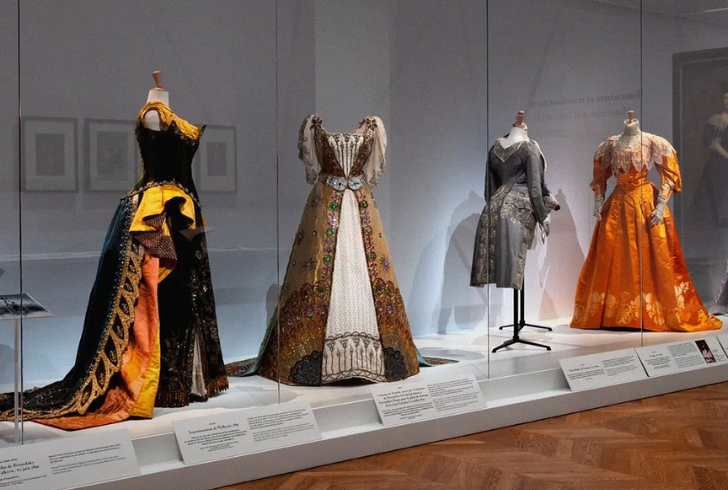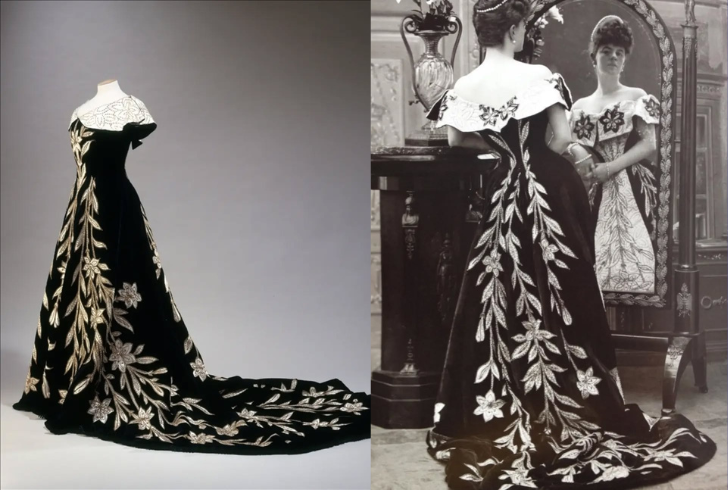Meet the Visionary Who Pioneered Modern Fashion and Haute Couture
Well before fashion weeks and designer logos dominated runways, Charles Frederick Worth changed the industry forever. In 1858, Worth established his own fashion house at 7 Rue de La Paix in Paris using his own name. Almost instantly, elite women from around the world flocked to him for garments that carried not just style, but authority. Rather than tailoring a customer’s vision, Worth offered his own—and in doing so, he redefined what it meant to be a designer.
Historians rightfully credit him as the “father of haute couture.” As the first designer recognized by name rather than by clientele, Worth flipped tradition on its head.
Today, a new exhibition titled “Worth: Inventing Haute Couture” at the Petit Palais in Paris explores his enduring legacy. Curated with help from Palais Galliera, it marks the first French retrospective of the House of Worth and the second worldwide since the Brooklyn Museum’s 1960s showcase.
Inside the Exhibition
The showcase includes creations spanning from the house’s early years through the 1920s. Dresses worn by famous performers such as Nellie Melba, Sophie Croizette, and Sarah Bernhardt are on display for visitors to see. Beyond garments, the collection features rare possessions of the Worth family, like a black lacquer screen by Jean Dunand and striking nude portraits of Jean-Charles Worth captured by Man Ray.
The exhibition also taps into the power of scent. A recreation of Worth’s floral fragrance “Je Reviens,” reimagined by Maurice Blanchet and Osmothèque, lingers throughout the exhibit. Classic Lalique-designed perfume bottles also add depth to the historical storytelling.

- Instagram | @bazaarbr | Annick Lemoine says Petit Palais gives the perfect backdrop to Worth’s elegant fashion history.
Although the garments won’t travel due to their fragility, the richness of the Paris setting—especially the Petit Palais’s architecture—makes it a fitting home for this tribute. Chief curator Annick Lemoine highlighted that the building’s Belle Époque elegance complements Worth’s era beautifully.
Changing the Fashion Model Forever
Born in England in 1825, Worth honed his craft with textile merchants before moving to Paris. He joined Maison Gagelin as a salesman and dressmaker, eventually co-founding Worth and Bobergh with partner Otto Bobergh.
Notably, Worth didn’t wait for clients to bring ideas to him. Instead, he created finished designs that buyers could choose from—a radical shift in how couture operated. As Palais Galliera’s Sophie Grossiord explained, Worth “didn’t necessarily agree with what his clients wanted.” Instead, clients came to him for his ideas.
He offered modular designs like transformation dresses with adjustable sleeves. While embellishments could still personalize a gown, Worth firmly directed the style conversation. “Women come to see me to ask for my ideas, not to follow theirs,” he once told “Blackwood’s Edinburgh Magazine.”
Dressing the Elite
During the opulent Second French Empire (1852–1870), Worth’s name became synonymous with status. His dresses graced elaborate costume balls, as shown in the 1878 painting “Une Soirée” by Jean Béraud. From historical references like his Margaret Theresa-inspired dress to whimsical costumes resembling umbrellas, Worth embraced variety.
Support poured in from European royalty and high society. Empress Eugénie of France—introduced to Worth by Princess Pauline von Metternich—quickly became his most powerful client. Publications like “Le Monde Illustré” referred to Worth as “the absolute power in the world’s royalties.”
His atelier scaled fast, growing from 500 to over 1,000 workers. The clientele included elites from Russia, Austria, India, and Japan. American dynasties—the Astors, Morgans, and Vanderbilts—provided a steady stream of orders, and scenes from HBO’s “The Gilded Age” in the exhibit nod to this U.S. connection.
Adapting to Trends and Tariffs
Worth adapted to the times. Fashion changed from crinolines to bustles as the Second Empire gave way to the Third Republic. He responded by toning down elaborate shapes while keeping elegance intact.
Still, new challenges emerged. In the 1890s, the United States sharply raised import tariffs, inflating the price of Worth’s garments abroad. That move gave rise to imitators who copied his work at a fraction of the cost. Recognizing the threat, Worth took action.
In 1868, he founded the Chambre Syndicale de la Haute Couture—now known as the Fédération de la Haute Couture et de la Mode. This institution protected French couture from design theft and elevated Paris as the epicenter of style.
Lasting Innovations in Fashion Practice
Beyond clothes, Worth introduced structural changes still used today. He pioneered the use of live models (his wife Marie was the first) and launched seasonal presentations that resemble modern runway shows. He cataloged each design with photographs and unique codes, setting precedents for documentation and branding.
Grossiord emphasized that Worth’s clientele was vast, and while many of his order books have vanished, some records survive. Brands like Louis Vuitton and Cartier, connected to the Worth family by both business and marriage, confirm his wide influence.

- Instagram | @vickyhaddock_dresshistory | Élisabeth Greffulhe wore a Worth dress that still inspires fashion lovers today.
Among the most iconic pieces on display is a dress owned by Countess Élisabeth Greffulhe, who inspired Marcel Proust’s character, the Duchess of Guermantes, in “À la Recherche du Temps Perdu.”
Legacy in Literature and Luxury
Worth’s cultural impact extended into fiction. Émile Zola portrayed him as the character Worms in “La Curée,” describing him as “the genius tailor before whom the Second Empire’s rulers took to their knees.” Such recognition highlighted how far Worth had risen—from a textile clerk to the most powerful name in global fashion.
His ability to merge art, commerce, and innovation still defines haute couture. By transforming fashion into a designer-led industry, he laid the foundation for future icons to thrive. More than a century later, Worth’s influence remains embedded in every tailored gown, runway debut, and Paris Fashion Week spectacle.
Worth’s Influence Still Shapes Fashion Today
Charles Frederick Worth didn’t just dress royalty—he rewrote the rules of fashion. Through innovation, business savvy, and artistic vision, he elevated the designer from servant to tastemaker. His practices remain central to haute couture today.
As the exhibition “Worth: Inventing Haute Couture” shows, fashion’s evolution owes much to one man’s decision to trust his creative instincts—and challenge the status quo. Visitors leave not only admiring the garments, but also understanding the man who gave them meaning.